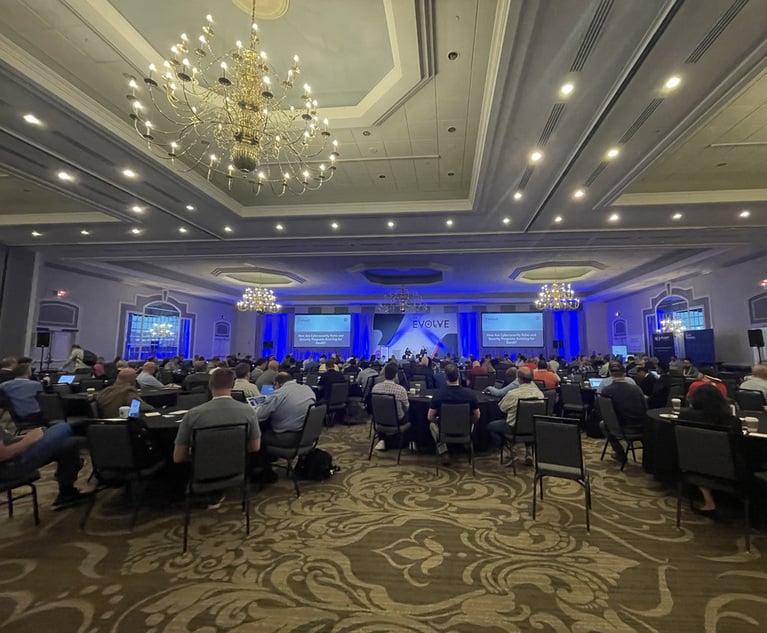Uniformity of taxation of the surplus lines market remains thekey regulatory and legislative goal of the National Association ofSurplus Lines Offices Ltd. (NAPSLO), according to NAPSLO'sLegislative Committee.
|Just four years after the landmark Nonadmitted and ReinsuranceReform Act (NRRA) was enacted by Congress in 2010, “NAPSLO believesthat the only viable and uniform national solution is for allstates to tax and retain all U.S. non-admitted written premiums attheir home state tax rate,” said Lana S. Parks, president of theParks Group, Arlington, Tex., co-chair of the NAPSLO LegislativeCommittee. “This brings efficiency, clarity and uniformity to thesurplus lines transaction.”
|As part of that, NAPSLO is evaluating all states to determinewhich states “we should target first in order to achieve uniformityin this critical area for our market,” said Keri Kish, NAPSLO'sdirector of government relations.
|She said there are currently 46 states that collect taxes andretain them, with just six jurisdictions participating in theNon-Admitted Insurance Multi-State Agreement (NIMA), which sharestaxes amongst the members. “We think with 46 states we are nearinguniformity on home state taxation,” she said.
|NAPSLO believes that in passing the NRRA, Congress sought toachieve a simpler and more efficient system of regulation andtaxation of the surplus lines industry establishing the insured's“home state” as the one and only jurisdiction to regulate and taxsurplus lines transactions.
|“Congress also clearly expressed its intent that statesestablish a uniform, nationwide approach to the regulation andtaxation of the surplus lines industry,” said Kish.
|She added that NAPSLO believes that there are opportunities forthe states to bring about the full spectrum of uniformity andefficiency envisioned by Congress and that is a key NAPSLOpriority.
|Parks noted that NRRA did not only focus on taxation but alsoaddresses insurer eligibility, saying the “NRRA clearly definescriteria for carrier eligibility compliance requirements.
|“States should not impose additional requirements beyond theNRRA,” she added.
|Kish said that NAPSLO is also focused on eliminatingrequirements in states that exceed the NRRA insurer eligibilityprovisions.
|Another key objective of NAPSLO advocacy efforts is uniform andreciprocal licensing of surplus lines brokers by the states, addsco-chair James C. Drinkwater, president CEO of the BrokerageDivision of AmWINS, which is based in New York.
|In line with that, NAPSLO strongly supports legislation thisyear creating the National Association of Registered Agents andBrokers (NARAB). Different versions have passed both the House andSenate and the industry is hoping it will pass Congress by the endof the year.
|It has been a goal of the industry for a long time, and one wascreated through a 1999 law. However, there were strings attached toits creation, and state regulators were able to thwart itsimplementation by meeting certain thresholds.
|“This is critical legislation, and there is no industryopposition to it,” said Drinkwater, who added that it willestablish “vigorous” licensing and ethical requirements for agents,as well as uniform continuing education requirements.
|Through a panel of state regulators and industryrepresentatives, “it will establish requirements on a multi-statebasis in lieu of every state having their own requirements forthese criteria,” he added. “That will ensure consistency to theserequirements.”
|Parks said that her firm is mainly a Texas general agency. Thatis so “because it is hard to keep up with all the licensingrequirements in each state,” she said. “This critical legislationwill streamline agency licensing to allow us to operate on amulti-state basis.”
|Parks said, that, “Once NARAB -II is passed, we would entertaindoing multi-state risks.”
|Drinkwater also noted that the NAPSLO Legislative Committee iswatching closely as Congress deliberates whether to reauthorize theTerrorism Risk Insurance Act.
|“We need to know as soon as possible what it is going to looklike, and it needs to be reauthorized as soon as possible,” headded. “It is a primary concern of agents/brokers, and companies.We have to understand the TRIA backstop.”
|Another high priority for NAPSLO is revisions to the federaldefinition of private flood insurance. Drinkwater said that NAPSLOstrongly supports H. R. 4558, the Flood Insurance Market Parity andModernization Act of 2014, which would clarify existing law so asto ensure that surplus lines insurers are eligible to offer privatemarket solutions and alternatives to consumers in need of uniqueand complex flood risks. The companion Senate legislation is S.2381.
|“This is a growth opportunity for non-admitted insurers,” Parkssaid.
|Drinkwater added, “We want legislation that will facilitate theability of surplus lines insurers to be eligible to offer privatemarket solutions and alternatives to consumers in need of solutionsto complex flood risks.”
|But, tax uniformity remains the key issue. NAPSLO recentlyanalyzed the amount of tax dollars moving among the NIMA members.NAPSLO found that during the first five quarters of operation, theNIMA members shared approximately $1.1 million in tax dollars at anapproximate cost of $1.6 million in filing fees.
|As noted by Parks, sharing premium taxes with the state wherethe risk exists is “unnecessary, costly and burdensome to both thebroker and the insured.” Parks said it is “detrimental to theconsumer” because it increases compliance costs to the broker thatfar exceeds the amount of taxes to be reallocated to the states.“Therefore, there is no cost/benefit ratio.”
|All of these issues are addressed in a set of “GuidingPrinciples on Uniformity in State Surplus Lines RegulatoryRequirements” adopted by NAPSLO's Legislative Committee andBoard of Directors this past June. Parks said that these Principlesidentify key areas NAPSLO wants to talk to state officials about inorder to achieve greater uniformity.
|“The document affirms NAPSLO's commitment to a uniform,state-based regulatory system,” said Parks. Drinkwater added thatNAPSLO and the Legislative Committee are committed to workingtoward these uniform measures with the states.
|Kish added that NAPSLO's tax sharing analysis, the UniformityPrinciples and additional advocacy work and resources are availableon the NAPSLO website and she encouraged all NAPSLO members tovisit the site for more information.
Want to continue reading?
Become a Free PropertyCasualty360 Digital Reader
Your access to unlimited PropertyCasualty360 content isn’t changing.
Once you are an ALM digital member, you’ll receive:
- All PropertyCasualty360.com news coverage, best practices, and in-depth analysis.
- Educational webcasts, resources from industry leaders, and informative newsletters.
- Other award-winning websites including BenefitsPRO.com and ThinkAdvisor.com.
Already have an account? Sign In
© 2024 ALM Global, LLC, All Rights Reserved. Request academic re-use from www.copyright.com. All other uses, submit a request to [email protected]. For more information visit Asset & Logo Licensing.








